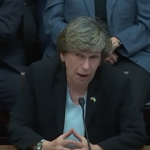Academic Economist Endorses Free Market Health Care Reform

Occasionally, one of our more free market economists in academe latches onto an idea that moves us away from collectivism. Unfortunately, the impact is usually marginal.
Such an idea is “reference pricing,” or competitive pricing for a handful of medical procedures that some self-insuring companies, such as Safeway, are experimenting with. “We estimated the potential savings from extending reference pricing by multiplying the price reductions by the spending figures,” James C. Robinson, an economist at Berkeley wrote in the March 2017 issue of Health Affairs, a monthly peer-reviewed journal. “Potential savings ranged from a low of $340 million for cataract removal surgery to a high of $7.59 billion for laboratory tests, with a total across all included procedures of $19.59 billion.”
Interestingly, in his rather exhaustive review of the available research on reference pricing, Dr. Robinson found that “None of the published studies found a change in the rate of complications.”
At the Cato Institute, Dr. Robinson estimated the savings from reference pricing at 8 percent of total health care spending. This is indeed, as Mark Pauly, a professor of Penn, put it on the same panel, “not chump change” in a sector of the economy where outlays run better than a trillion dollars.
Nevertheless, one has to ask, “What about the other 92 percent?”




